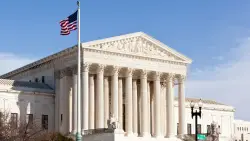Kids are making deepfakes of each other, and laws aren’t keeping up

This story was originally communicated by Jasmine Mithani of The th Meet Jasmine and read more of her reporting on gender politics and protocol Last October a -year-old boy in Wisconsin used a picture of his classmate celebrating her bat mitzvah to create a deepfake nude he then shared on Snapchat This is not an isolated matter Over the past insufficient years there has been affair after incident of school-age children using deepfakes to prank or bully their classmates And it keeps getting easier to do When they emerged online eight years ago deepfakes were initially complicated to make Nowadays advances in apparatus through generative artificial intelligence have provided tools to the masses One troubling consequence is the prevalence of deepfake apps among young users If we would have talked five or six years ago about revenge porn in general I don t think that you would have revealed so a multitude of offenders were minors reported Rebecca Delfino a law professor at Loyola Marymount University who studies deepfakes Related Trump signs Klobuchar-Cruz Take It Down Act on nonconsensual deepfakes Federal and state legislators have sought to tackle the scourge of nonconsensual intimate image NCII abuse sometimes referred to as revenge porn though advocates prefer the former term Laws criminalizing the nonconsensual distribution of intimate images for authentic images at least are in effect in every U S state and Washington D C and last month President Donald Trump signed a similar measure into law known as Take It Down But unlike the federal measure numerous of the state laws don t apply to explicit AI-generated deepfakes Fewer still appear to directly grapple with the fact that perpetrators of deepfake abuse are often minors Fifteen percent of students shared knowing about AI-generated explicit images of a classmate according to a survey issued in September by the Center for Democracy and Hardware CDT a center-left think tank Students also announced that girls were much more likely to be depicted in explicit deepfakes According to CDT the findings show that NCII both authentic and deepfake is a important issue in K- general schools The conduct we see minors engaged in is not all that different from the pattern of cruelty humiliation and exploitation and bullying that young people have constantly done to each other stated Delfino The difference lies in not only the use of system to carry out certain of that behavior but the ease with which it is disseminated Policymakers at the state and federal level have come at perpetrators of image-based sexual abuse hard and fast no matter their age Delfino noted The reason is clear she revealed The distribution of nonconsensual images can have long-lasting serious mental healthcare harms on the target of abuse Casualties can be forced to withdraw from life online because of the prevalence of nonconsensual imagery Image-based sexual abuse has similar negative mental wellness impacts on survivors as those who experienced offiline sexual violence Delfino commented that under most of existing laws youth offenders are likely to be treated similarly to minors who commit other crimes They can be charged but prosecutors and courts would likely take into account their age in doling out punishment Yet while certain states have developed penal codes that factor a perpetrator s age into their punishment including by imposing tiered penalties that attempt to spare first-time or youth offenders from incarceration preponderance do not While majority of agree there should be consequences for youth offenders there s less consensus about what those consequences should be and a push for reeducation over extreme charges Jail time offers answers and questions A survey by the Cyber Civil Rights Initiative CCRI a nonprofit that combats online abuse revealed that people who committed image-based sexual abuse communicated the threat of jail time as one of the strongest deterrents against the crime That s why the organization s initiative recommendations have invariably pushed for criminalization revealed Mary Anne Franks a law professor at George Washington University who leads the initiative Multiple states have sought to address the issue of AI-generated child sexual abuse material which covers deepfakes of people under by modifying existing laws banning what is legally know as child pornography These laws tend to have more severe punishments felonies instead of misdemeanors high minimum jail time or important fines For example Louisiana mandates a minimum five-year jail sentence no matter the age of the perpetrator While incidents of peer-on-peer deepfake abuse are increasingly cropping up in the news information on what criminal consequences youth offenders have faced remains scarce There is often a crucial amount of discretion involved in how minors are charged Generally juvenile justice falls under state rather than federal law giving local bureaucrats leeway to impose punishments as they see fit If local prosecutors are forced to decide between charging minors with severe penalties that are aimed at adults or declining to prosecute the bulk will likely choose the latter stated Lindsay Hawthorne the communications coordinator at Enough Abuse a Massachussetts-based nonprofit fighting against child sexual abuse But then this throws away an opportunity to teach youth about the consequences of their actions and prevent reoffending Charges that come at a prosecutor s discretion are more likely to disproportionately criminalize youth of color and LGBTQ youth she commented A different approach to incarceration Delfino disclosed that in an ideal episode a judge in juvenile court would weigh multiple factors in sentencing the severity of the harm caused by deepfake abuse the intent of the perpetrator and adolescent psychology Experts say that building these factors directly into program can help better deal with offenders who may not understand the consequences of their actions and allow for different enforcement mechanisms for people who say they weren t seeking to cause harm For example new laws passed this session in South Carolina and Florida have proportional penalties that take into account circumstances including age intent and prior criminal history Both laws mirrored model provision written by MyOwn Image a nonprofit dedicated to preventing technology-facilitated sexual violence Founded by image-based sexual abuse survivor Susanna Gibson the organization has been involved in advocating for strengthened laws banning nonconsensual distribution of intimate images at the state level bringing a criminal justice change lens into the debate Under the Florida law which took effect May offenders who profit from nonconsensual intimate images distribution are charged with felonies even if for a first offense But first-time offenders who use intimate images to harass casualties are charged with a misdemeanor if they do it again they then are charged with a felony This avoids sweeping criminalization of people who may not fully understand the harm caused by their actions Will Rivera managing director at MyOwn Image declared in a declaration South Carolina s newly passed law addressing AI-generated child sexual abuse material meanwhile explicitly states that minors with no prior related criminal record should be referred to family court and recommends behavioral wellness counseling as part of the adjudication A separate South Carolina law banning nonconsensual distribution of intimate imagery also has tiered charges depending on intent and previous convictions Beyond criminalization Experts are mostly united in believing that incarcerating youth offenders would not solve the dilemma of image-based sexual abuse Franks noted that while her group has long recommended criminal penalties as part of the answer there need to be more procedures solutions for youth offenders than just threatening jail time Amina Fazlullah head of tech guidelines advocacy at Common Sense Media revealed that laws criminalizing NCII and abusive deepfakes need to be accompanied by digital literacy and AI development measures That could fill a massive gap According to Stanford there at this time isn t any comprehensive research on how multiple schools specifically teach students about online exploitation Since majority teens aren t keeping abreast of criminal codes AI literacy development initiatives could teach young users what crosses the line into illegal behavior and provide materials for casualties of nonconsensual intimate imagery to seek redress Digital literacy could also emphasize ethical use of equipment and create space for conversations about app use Hawthorne noted that Massachusetts s law banning deepfakes which went into effect last year directs adolescents who violate it to take part in an tuition campaign that explains laws and the impacts of sexting Ultimately Franks declared the behavior that underlies deepfake abuse isn t new and so we do not need to rewrite our responses from scratch We should just stick to the things that we know which don t change with mechanism which is consent autonomy agency safety Those are all things that should be at the heart of what we talk to kids about she explained Like abstinence-only mentoring schools shaming and scaring kids about more common practices like sexting is not an effective way to prevent abuse Franks mentioned and can discourage kids from seeking help from adults when they are being exploited Franks noted that parents too have the power to instill in their children agency over their own images every time they take a photo She also revealed there are myriad other methods to regulate the ecosystem around sexually explicit deepfakes After all bulk strategy around deepfakes addresses harm already done and laws like the federal Take It Down Act put a burden on the victim to request the removal of their images from online platforms Part of addressing the predicament is making it more hard to create and rapidly distribute nonconsensual imagery and keeping tools for deepfakes out of kids hands experts announced One avenue for change that advocates see is applying pressure on companies whose tools are used to create nonconsensual deepfakes Third parties that help distribute them are also becoming a target After a CBS News scrutiny Meta took action to remove advertisements of so-called nudify apps on its platforms Frank also suggested app stores could delist them Payment processors too have a lot of power over the ecosystem When Visa Mastercard and Discover cut off payments to PornHub after a damning New York Times overview revealed how countless nonconsensual videos it hosted the largest pornography site in the world deleted everything it couldn t confirm was above board nearly percent of its total content Last month Civitai at last cracked down on generative AI models tailored around real people after payment processors refused to work with the company This followed extensive reporting by tech news site Media on the image-platform s role in the spread of nonconsensual deepfakes And of program Franks stated revamping the liability protections digital services enjoy under Section could force tech companies hands when it comes to liability compelling them be more proactive about preventing digital sexual violence A version of this article first appeared in Tech Plan Press Feeling overwhelmed by the news The th is considering new methods to keep you informed But we need your input Fill out this quick survey to share your thoughts The post Kids are making deepfakes of each other and laws aren t keeping up appeared first on MinnPost


